Submitting VAT Returns For Making Tax Digital (MTD)
In this era of rapid digitalization, HMRC has introduced a new initiative called Making Tax Digital (MTD). This guide is a comprehensive resource for businesses that must navigate the intricacies of VAT returns under MTD regulations. This article is worth reading because it simplifies the complexities of MTD, providing a step-by-step guide to ensure you meet HMRC’s requirements and avoid potential penalties.
What is Making Tax Digital (MTD) for VAT?
Making Tax Digital (MTD) for VAT is an initiative by HMRC to streamline and digitalize the UK tax system. Since April 2019, VAT-registered businesses with a taxable turnover above the VAT threshold have been required to use MTD-compatible software to keep digital records and file VAT returns. The new MTD for VAT rules aim to make it easier for businesses to manage their VAT affairs and communicate with HMRC more efficiently.
How do I register for MTD?
Registration for MTD is a straightforward process. First, ensure that your business falls under the scope of MTD by checking if your taxable turnover exceeds the VAT threshold. You must sign up for MTD on the HMRC website if it does. You can register for MTD as soon as your business is VAT-registered. Once registered, HMRC will confirm that you can start keeping digital records.
Preparing and Submitting VAT Returns Under MTD
When preparing to file VAT returns under the new MTD scheme, you first need MTD-compatible software. This software will keep your business records and calculate your VAT. The software will also submit your VAT return to HMRC, ensuring that all VAT returns are submitted digitally.
Your VAT returns should include information about your VAT compliance, such as your taxable turnover, the amount of VAT you owe, and any deductible VAT. Remember to cross-check all entries and ensure they are accurate before submission. Once submitted, you will receive a confirmation from HMRC.
Using Bridging Software for VAT Returns
Bridging software is a “digital link” between your data and HMRC. It is a viable solution for businesses that have previously used spreadsheets to manage their VAT. The bridging software will extract the necessary data from your spreadsheet and upload it to HMRC in the required format, ensuring all submissions comply with MTD regulations.
Complying with MTD Beyond April 2022
Beyond April 2022, the MTD initiative continues to evolve. Regardless of turnover, all VAT-registered businesses will be required to follow the MTD rules. Therefore, staying updated with the latest MTD guidelines and using MTD-compatible software for your VAT returns is essential. This will ensure that your business stays compliant and is able to file VAT returns promptly.
Key Takeaways:
- Making Tax Digital (MTD) is a new system that all VAT-registered businesses must comply with.
- Register for MTD via the HMRC website if your taxable turnover exceeds the VAT threshold.
- Use MTD-compatible software to keep digital records and file VAT returns.
- Bridging software can help businesses using spreadsheets transition to MTD.
- All VAT-registered businesses must follow MTD rules beyond April 2022, so stay updated with the latest guidelines.


Request a call back
Let us know when you would like us to call you back by filling in this form:
Our 5 Star Reviews



Latest News

Making Tax Digital 2023: MPs Criticise Delays and Complexity
Explore the challenges and impacts of the UK’s Making Tax Digital initiative, including delays and the cost burden on taxpayers.

Making Tax Digital: Small Business Review
Making Tax Digital Small Business Review 2023: Understanding the Basics and Preparing for Change Introduction to Making Tax Digital (MTD) Since 1948, Jack Ross Chartered

Making Tax Digital: The Rising Costs and Challenges
Making Tax Digital: The Rising Costs and Challenges Introduction Making Tax Digital (MTD), the ambitious initiative by HM Revenue & Customs (HMRC) to digitise the
